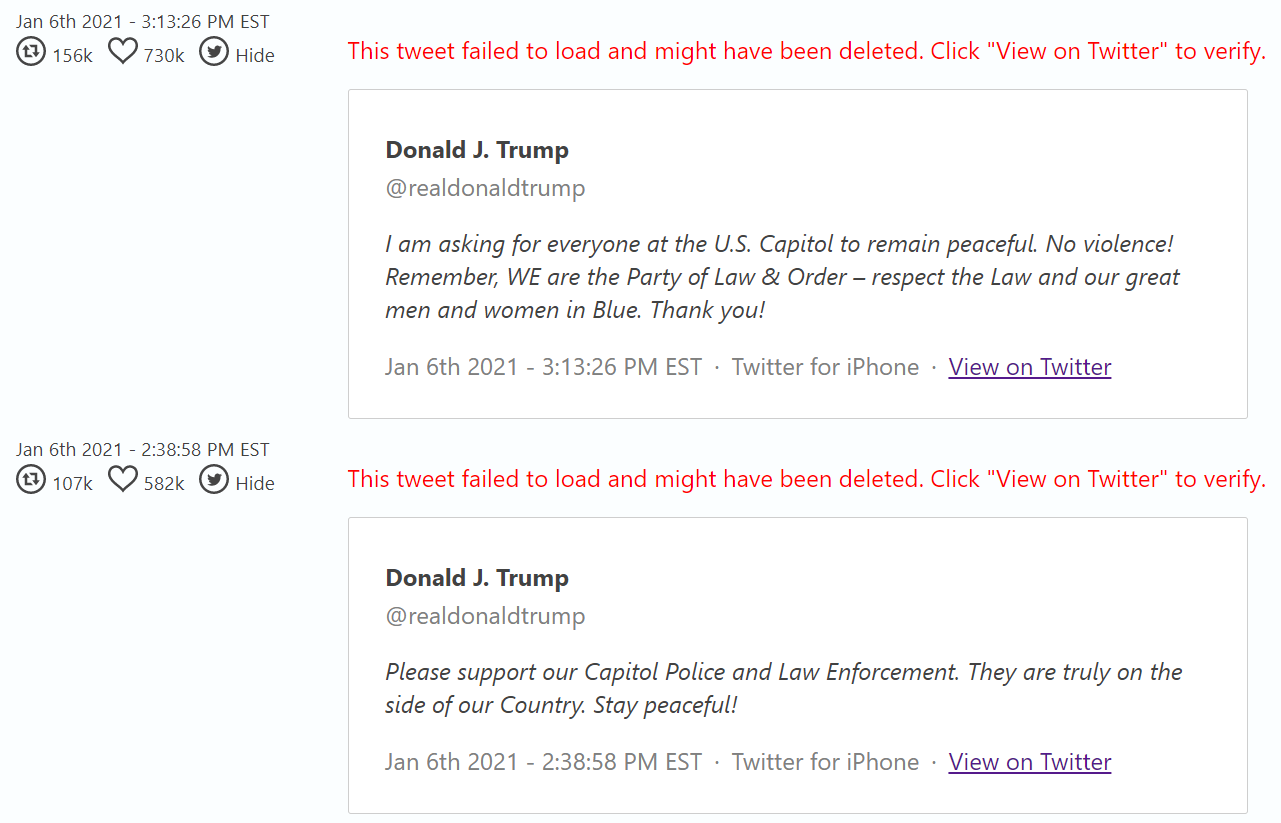Wyoming Republican Rep. Liz Cheney went after former President Donald Trump in her prime-time performance on Monday claiming that private messages of the president’s staff revealed an apathetic leader complicit in the riot at the Capitol as the attack unfolded.
“The violence was evident to all — it was covered in real time by almost every news channel,” said Cheney, House Speaker Nancy Pelosi’s hand-picked vice chair of the Select Committee on January 6. “But, for 187 minutes, President Trump refused to act when action by our president was required, indeed essential, and compelled by his oath to our Constitution.”
Trump’s 187-minute delay to action, she added, was a “supreme dereliction of duty.” An actual examination of the day’s events, however, highlighted by American Greatness Senior Contributor Julie Kelly, shows no such delay.
https://twitter.com/julie_kelly2/status/1471491090934992910?s=20
According to a detailed timeline of the turmoil by The New York Times, the first building was not breached until about 2:13 p.m. The timeline was corroborated by The Washington Post, which stamped the first break-in at 2:15 p.m. Trump’s first tweet addressing the upheaval shortly followed at 2:38 p.m., when the president made a plea for peace, writing, “Please support our Capitol Police and Law Enforcement. They are truly on the side of our Country. Stay peaceful!”
About 30 minutes later, Trump addressed the demonstrators again on Twitter.
“I am asking for everyone at the U.S. Capitol to remain peaceful. No violence!” the president wrote. “Remember, WE are the Party of Law & Order — respect the Law and our great men and women in Blue. Thank you!”

At 4:17 p.m. Trump posted a video on Twitter urging rioters to go home, a message that was promptly suppressed across the platform.
Exactly where Cheney came up with the 187-minute delay is unclear. If starting the clock from the time Trump finished his speech at the White House at 1:10 p.m., unrest at the Capitol gates had already been ensuing for about 20 minutes. During the address, Trump explicitly called on those gathered to protest “peacefully.”
Cheney’s office did not respond to The Federalist’s inquiries.
This is not the first time Cheney or the Jan. 6 Committee have gone after President Trump and Republican voters with the creation and deployment of fake news. In the election-year summer of 2020, Cheney was a primary purveyor of the fake Russian bounties story, which alleged that Trump downplayed Kremlin aggression to accelerate the timeline for troop withdrawal from Afghanistan. Cheney never apologized.
At the same hearing on Monday where Cheney made up her own timeline of the Capitol riot, Rep. Adam Schiff, D-Calif., read text messages between Ohio Republican Rep. Jim Jordan and former White House Chief of Staff Mark Meadows, which The Federalist revealed on Wednesday were fabricated.
The exchange, Schiff said, exposes “a lawmaker” pressing the vice president to unilaterally deny certification of the electoral college votes as unconstitutional.
The message, however, was forwarded to Meadows from Jordan, originally written by Washington attorney and former Department of Defense Inspector General Joseph Schmitz. The message, a sliver of which Schiff took out of context, adding punctuation and cooking up a fake graphic to illustrate it, was part of a four-page document that outlined the legal reasons behind Vice President Mike Pence’s authority to object to electoral certification from a handful of states. The document was published publicly ahead of Jan. 6 on everylegalvote.com.
The Jan. 6 Committee later confirmed The Federalist’s reporting and admitted that the messages were doctored.
“The Select Committee is responsible for and regrets the error,” a spokesman said.
This article has been updated since publication.









